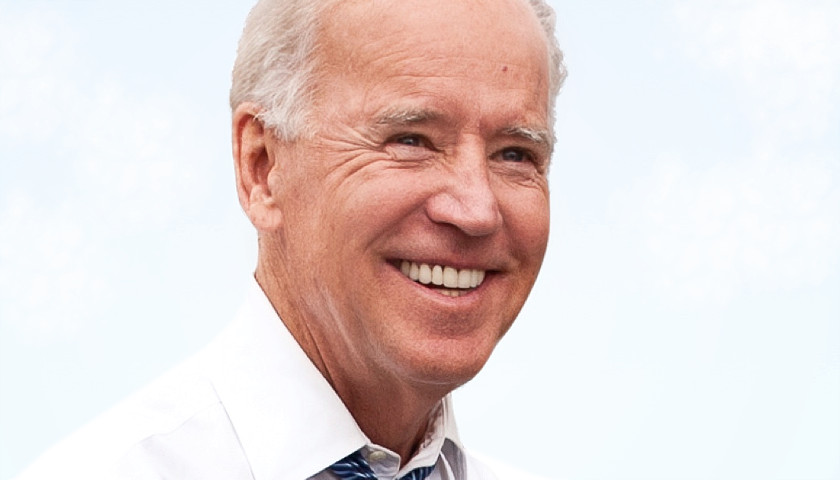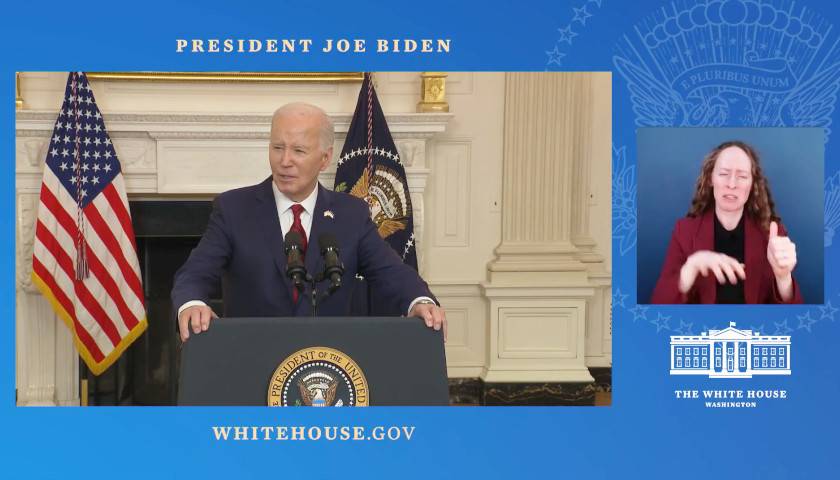by Edward Ring
Front running 2020 presidential contender Joe Biden has just released his climate “plan,”claiming that with a $1.7 trillion federal investment, U.S. carbon emissions will reach zero within 30 years.
You can say this for Biden – the canny old campaigner isn’t highlighting his climate plan as a cure-all for social injustice.
Unlike the “Green New Deal,” Biden leaves out of his blueprint a federal job guarantee, universal healthcare, and housing. And while he includes the obligatory obeisance to inclusion, diversity, equity, indigenous peoples, vulnerable communities, people of color, and every other paint-by-number platitude, those aren’t his main focus.
Nope, Joe is marketing the lunch box issues. Union jobs. Infrastructure. Energy leadership. Exports. Industries of the future.
Moreover, Biden’s plan, unlike the Green New Deal, does not read like a college term paper. But if you’re a climate skeptic, or if you’re skeptical that bigger government is the answer, this plan should have you worried. Because it comes very close to offering a consensus plan that even some of Trump’s swing voters might support: which is to fund technology initiatives and infrastructure projects that should be funded anyway, regardless of whether or not rising levels of atmospheric CO2 are a threat to our existence.
How Biden’s plan comes across depends on who is reading it. This ambiguity (likely intentional) permeates the document.
For example, the plan calls to “double down on the liquid fuels of the future” by developing “advanced biofuels.” But what are the details? If Biden is referring to land-dependent cellulosic ethanol, he is potentially set to fund a technology that would strip thousands, if not hundreds of thousands, of square miles of land of replacement nutrients from decaying foliage, even if the expensive processes necessary to convert that foliage to ethanol were finally rendered cost-effective. If, on the other hand, he is referring to ethanol grown in tanks using genetically enhanced algae, that process, if the technology ever matures, has potential.
These are very big ifs, but they’re not just plain stupid.
The merit of Biden’s plan rests in the eye of the beholder. How this is so is found in his reliance on funding breakthrough technologies. “Grid-scale storage at one-tenth the cost of lithium-ion batteries.” “Using renewables to produce carbon-free hydrogen at the same cost as shale gas.” “Capturing carbon dioxide from power plant exhausts and using it to make alternative products.”
Is this all pie in the sky? Or are the doubters just Luddites? Shall we believe in the power of innovation, except when it comes to cost-effective batteries, electrolysis of hydrogen, and direct synthesis of CO2? Biden is attacking the center with this line of reasoning. It requires a reasoned response, not ridicule.
New Infrastructure, But Who Pays?
Another area where Biden offers good sense instead of the usual nonsense is with respect to nuclear power. He calls for “small modular nuclear reactors at half the construction cost of today’s reactors.” Furt,her in the document, he calls for an investigation into the “future of nuclear energy,” to resolve issues of cost, safety, and waste disposal. This, too, is a position that is likely to earn Biden more voters than it loses.
When Biden calls for spending on “climate resiliency,” he’s really just talking about infrastructure upgrades: new bridges, new levees, a hardened electrical grid. Some climate skeptics will read between those lines and see sound logic; for alarmists, it’s all good.
It’s easy to pick Biden’s plan apart, of course. There is no chance the U.S. will achieve zero emissions by 2050. And, to date, the environmental side effects of massive deployment of renewables technology are catastrophic. Biden’s plan calls for “conserving 30 percent of America’s lands and waters by 2030.” Has he thought about how much of America’s lands and waters would have to be consumed by solar farms, wind farms, and biofuel farms, if his plan is aggressively funded and implemented? Has he considered the impact of sourcing the materials for all these solar farms, wind farms, and “grid-scale” battery farms, which are far more resource intensive than conventional energy?
Then there’s the money. Per the plan: “Biden’s climate and environmental justice proposal will make a federal investment of $1.7 trillion over the next 10 years, leveraging additional private sector and state and local investments to total to more than $5 trillion.”
But where is this 10-year budget? One might argue the U.S. economy, with a GDP of roughly $20 trillion, could absorb new government expenditures of $500 billion per year. If you like bigger government, why not shift another 2.5 percent of U.S. economic output from the private sector to the government sector? But where is the money going? Remember Obama’s “shovel ready” projects? That money bailed out the banks and public-sector pensions. Will this be more of the same?
Theories, Not Facts
Despite the fanatical arrogance of the environmentalist zealots and their institutional backers across every sector of America’s corporate establishment, the science of “climate change” is not beyond debate.
Every premise the establishment advances as fact relating to climate change—the cause, intensity, velocity, severity, urgency, and impact (mostly good or mostly bad)—are not facts; they are theories.
But when it comes to solutions, one of the biggest establishment “facts” is actually a very big, and very obvious lie. Biden’s document is called “The Biden Plan for a Clean Energy Revolution and Environmental Justice.” That second part, “environmental justice,” is pure B.S. Biden was smart enough to not make “environmental justice” the focal point of his plan, but nonetheless, he lays it on pretty thick. According to Biden’s proposal: “The impacts—on health, economics, and overall quality of life—are far more acute on communities of color, tribal lands, and low-income communities.”
That assertion, backed up by a handful of cherry-picked statistics, leads to the following: “[Biden] will make it a priority for all agencies to engage in community-driven approaches to develop solutions for environmental injustices affecting communities of color, low-income, and indigenous communities.”
Oh, come on. What does that even mean, besides hundreds of millions per year going to Democratic proxies masquerading as nonpartisan community organizers?
Here’s the reality that Biden, Alexandria Ocasio-Cortez, the establishment Bidenesque uniparty Democrats, and the insurgent “social justice” Democrats will never admit: aggressive legislation designed to move the United States to zero-carbon emissions in 30 years will devastate low-income communities. The price of every necessity will rise—housing, heating, electricity, gasoline, water, and food. The multinational corporations providing these necessities will profitably navigate the regulations, collect the subsidies, charge higher prices, and drive out smaller competitors.
For anyone who still doubts this fact—that the cost of extreme energy efficiency, extreme land use restrictions, extreme renewables mandates, are imposing crippling burdens on ordinary people—come to California. While there, ask why, inexplicably, California’s low-income communities continue to vote, by the millions, for the Democrats who have made their lives so difficult.
The answer isn’t hard to find: Leftist oligarchs who make obscene amounts of money from unnecessarily strict “green” regulations are Democrats, who along with their token RINOs, spew the same rhetoric nonstop: “vote for us, or the planet will burn up.”
It’s really that simple. And it works.
This is why fomenting climate alarmism is the top priority of Democrat-controlled public schools, Democrat-owned mass media and social media, and Democrat-dominated government bureaucracies. Along with the obsession with “social justice” and identity politics, climate catastrophizing engages the lizard brain in most humans. Primal fears and anxieties are stimulated by images of floods, hurricanes, and raging wildfires. The urgent need to do whatever is necessary, whatever the cost, is reinforced continuously, at every level. For far too many, emotion overwhelms reason.
Outside of California, most Americans, to their credit, remain split on the urgency of climate change. Which is why Biden’s new plan is a savvy bit of political reckoning.
– – –
Edward Ring is a Senior Fellow of the Center for American Greatness. He is a co-founder of the California Policy Center, a free-market think tank based in Southern California, where he served as their first president. He is a prolific writer on the topics of political reform and sustainable economic development. Ring, a fifth-generation Californian, has an undergraduate degree in political science from UC Davis, and an MBA in finance from the University of Southern California.
Photo “Joe Biden” by Joe Biden.




